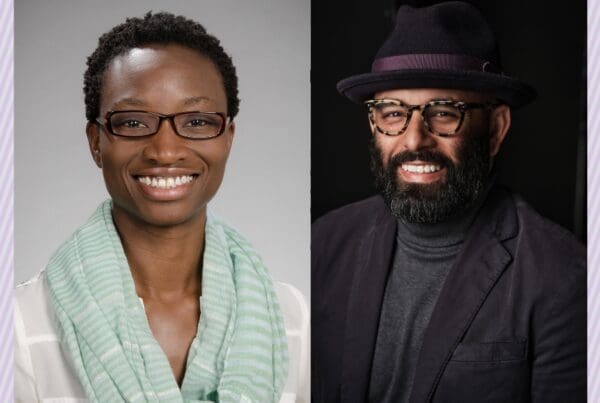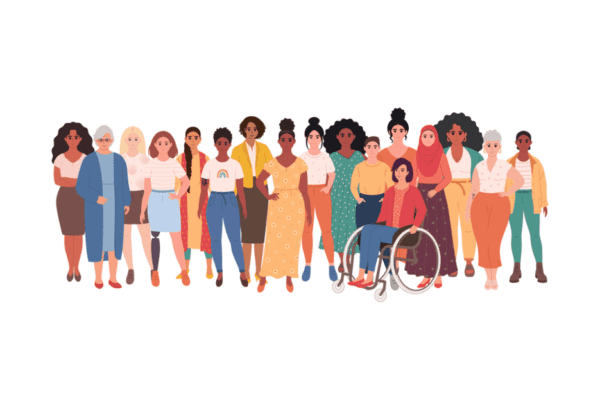Native American Heritage Month, celebrated every November, is a time to reflect on the role each of us plays in making our spaces more equitable for Native Americans, a group that includes both American Indians and Alaska Natives. Especially if you’re non-Native, ask yourself how you can utilize your interests and skills to uplift the work and lives of Native Americans, not just this month, but every month.
It’s also important to learn more about Native peoples and cultures if you haven’t already. To help with this, we’ve compiled a guide and list of resources about the significance of the month and more.
In the spirit of sharing knowledge and experiences and centering Native voices, we asked a few of our Native American colleagues to talk about their cultures, some of their favorite traditions and who some of their favorite Native artists are. They also share what we all can do to support our Native colleagues, patients and community members.
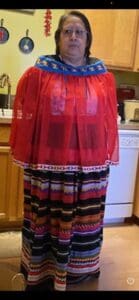
Delberta Vallejo
Delberta Vallejo, Cashier, UW Medical Center – Northwest
Tribal affiliation: Seminole/Creek
“My name is Delberta Vallejo. I have worked at Northwest Hospital/UW Medical Center – Northwest as a Cashier for 32 years. I was born in California, but my parents moved our family back to Oklahoma to grow up. I am a proud tribal member of the Seminole/Creek.
One thing I liked as a child was to watch my grandma sew on her pedal sewing machine. She would make traditional dress wear for our family. I am so proud to show the dress she made for me.
One of my favorite foods is frybread. And some of the other foods I miss you could only get back home. I like our traditional dances we have back in Oklahoma. One is called stompdance, they do it during the summertime. And I also like going to Powwow. One of our famous artists in Oklahoma is Enoch Kelly Haney — he is Seminole. I enjoy getting involved with our Indigenous Community. I also love the big diversity here in Seattle.”

Kim Kardonsky
Kim Kardonsky, MD, Assistant Professor, Department of Family Medicine, Underserved Pathway director and TRUST Director, College Mentor
Tribal affiliation: Jamestown S’Klallam
“My heritage means paying attention to individuals, families and communities. It means that we are all connected as people on a certain level and also to nature. It means that there are teachings, and they are stronger when we share them with others.
One of my favorite Native writers is Louise Erdrich. She has many books that I have enjoyed over the years and her latest one, “The Sentence,” is particularly awesome. I heard her read at a bookstore in Seattle and was brought to tears. She happened to read my favorite part of “The Painted Drum.” We lived in Minneapolis, and she owns a bookstore there called Birchbark Books.
The concept of the Land Acknowledgement is a reasonable way for people at UW Medicine to center Native voices and support Native colleagues. It is a great first step, and we should be challenged to take it a step further to do some action items. Some actions that come to mind are to learn about the land that the school and people stand/work/learn upon, plant a tree, donate to Real Rent Duwamish, go on a walk and say something kind to mother nature, read an article about the land you are on and the original people of the land, buy something from a Native-owned business, and learn how to be an advocate for underrepresented minority groups. Stand beside Native colleagues and learn a bit about the successes and challenges they face routinely. Let oneself be called to action, then dive in and do the actions.”
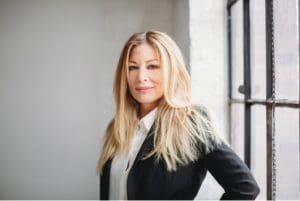
Laura Montour
Laura Montour, MD, Co-Director for the Center for Weight Loss and Metabolic Surgery at UW Medical Center – Roosevelt
Tribal affiliation: Haudenosaunee, People of the Longhouse, Mohawk, Bear Clan
“I am very proud to be a Mohawk woman. My Haudenosaunee ancestors originally occupied areas in New York before migrating to what is now known as the Six Nations Reserve in Ontario, Canada. My culture is very important to me, and it is integral to how I live my life. In the Haudenosaunee territories, women are sacred, and our voices are always encouraged. Growing up on the Six Nations reserve, it was always clear to me the importance of being a strong woman like my mother, or grandmother who was a survivor of the residential school system. I chose a career in medicine because I wanted to use my voice to help reduce the health disparities affecting our Native communities. I grew up with childhood obesity, and unfortunately obesity and Type 2 diabetes disproportionately impact many Native people in the U.S. and Canada. I feel very fortunate to dedicate my career to the field of obesity medicine at UW Medicine.
Living so far away from my community has been hard because family is extremely important in my culture. I really miss foods like our traditional Haudenosaunee corn soup and corn bread. I also miss being able to attend our annual Grand River Champion of Champions’ Pow Wow the last weekend of July. There is nothing like the beat of a drum at a Pow Wow, and my favorite traditional dance is the Haudenosaunee Round dance. My favorite Six Nations musician is Murray Porter, my favorite Six Nations actor is Graham Greene (“Dances with Wolves”) and my favorite athlete from Six Nations is (of course!) my cousin Brandon Montour, who now plays for the Florida Panthers.
I think UW can continue to support Native voices by recognizing our staff and faculty on a regular basis and not just one month a year. Increasing our visibility to other staff and patients is a great way for us to find each other, connect and support each other.”
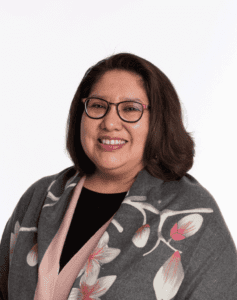
Myra Parker
Myra Parker, JD, PhD, Associate Professor, Department of Psychiatry and Behavioral Sciences, and director, Seven Directions: A Center for Indigenous Public Health, she/her
Tribal affiliation: Mandan and Hidatsa
“I grew up on the Fort Berthold Indian Reservation in western North Dakota in the 1970s and early ’80s. I was surrounded by my extended family, my Mandan and Hidatsa community, and the elders of our community who held our traditional knowledge and practices. I didn’t understand how privileged I was, as now, much of the land, the water, the air and the community context has shifted with the fracking development in the region.
I can still recall the cool summer evenings when my grandmother would be working on beadwork, or quilting, or taking care of her garden. Our tribes have always been agricultural. We still grow corn, beans and squash that we cultivated for thousands of years, and my grandmother had a huge garden. She taught me how to plant corn, how to take care of it, and I played in the rows, talking to the corn and making doll houses out of the stalks.
My grandmother took me to visit her sisters and their families and her cousins and friends. As a child, I didn’t learn Hidatsa or Mandan, because my grandmother chose not to teach her children, as she was physically punished for speaking her languages in the Catholic day school when she was 5. During those visits, her conversations with family and friends would wash over me, and they would laugh and laugh, after someone made a joke in Hidatsa. When I asked what was funny, she would say it didn’t really translate well into English. It was frustrating, but now I would give almost anything to be back there, listening to her laugh with our relatives.
Now, I am trying to learn Hidatsa over Zoom with my parents and sisters, along with my aunt and cousin. Sometimes we are able to have one of the forty fluent Hidatsa speakers on the call to help us with pronunciation, grammar and vocabulary. This weekly practice has brought us closer together during the pandemic. Each Hidatsa word is precious to me. It gives me a connection to people who came long before me, and insight into how they saw the world, and the unique understandings and practices that live on today. I hope to take that knowledge into the future, so other Hidatsa will be able to access this critical knowledge about our culture, our families and our communities, and our connection to the land and everything around us. My culture means everything to me. It informs who I am, how I see myself in relation to the world around me, and what our collective future will be.
My grandmother taught me to make corn soup, from sweet corn, beans and buffalo. It’s the best meal I’ve had and remains my favorite. I love listening to the Mandaree Singers, a drum group of Mandan and Hidatsa tribal members who sang together when I was a child.
I hope UW Medicine can take the time to learn about Native cultures and support the inclusion of diverse tribal cultures in the teaching about different epistemologies and how they impact health understandings and behaviors.”

Raphaelita Arviso
Raphaelita “Raphi” Arviso, LICSW, Clinical Social Worker, International Medicine Clinic at Harborview Medical Center, she/her
Tribal Affiliation: Navajo (Dine’)
“I am Navajo (Dine’) born in Gallup, New Mexico, and raised there and in Thoreau, NM, and in the surrounding Navajo Reservation. An important aspect of Navajo culture is introduction, sharing one’s name and clans. My mother’s clan is Todích’íí’nii (Bitter Water Clan), born for my father’s clan Nakai Dine’ (Mexican Clan). My Chei (maternal grandfather’s clan) is Naasht’ézhí (Zuni Pueblo Clan). My Nali (paternal grandfather’s clan) is Tsenjikinnie (Cliff Dweller Clan).
I strive toward the cultural practice of Hozho, living a life in balance and harmony. Also being very aware of K’é, the feeling you have when you are deeply connected to others and understand and value your roots. This worldview helps me in my personal life but also my life as a social worker. I am grateful for the work I do. It carries much intensity as one bears witness to people during their challenges and often times through significant loss, grief and trauma.
I am grateful for the teachings and experiences passed on to me by my parents, grandparents, great-grandparents, aunts, uncles, cousins and community. Everywhere I go in life, I take this with me. It is cherished and priceless. I also know I will add my experiences and teachings to be passed along to the next generation. It is an awareness and responsibility.
I am very close to my family, many of whom live back home in New Mexico and other parts of the country. I am grateful for technology that supports me being tied to family and friends. Facebook maintains connection and Facetime and similar platforms allow me to “see” my parents and family. I can be in Washington State and still be able to “see” various activities in New Mexico. There is a strong familial tie that connects families and Native American communities. One knows it when we cross paths with one another, a smile, a nod, an acknowledgment. There is also a strong sense of humor, even dark humor, and intense teasing. I continue to honor and respect the generations of ancestors who came before me, their strength and strong work ethic, which contributes to the life I lead today.
There are many types of cuisine in New Mexico; however, ones that stand out are red chile, green chile, mutton and frybread. As I became older, I realized that frybread is a “survival food.” When Native peoples were placed on reservations, they no longer had access to their typical diet and were given government rationed commodities with the basic ingredients of frybread. This is the origin of frybread, and it is attached to colonialism, survival and negative health implications. Yet we also embrace it as a tradition. In a fun one-upmanship, we like to tease each other, boasting “My grandmother’s frybread is better than yours.”
Being so far from my Southwest home, I enjoy hearing the Navajo language via KTNN (Navajo radio station). When feasible, I like to gather with other Navajo people via the Navajos in the Northwest group. I like to read the Navajo Times, Gallup Independent and other publications. I like to listen to Radmilla Cody, Sharon Burch and other Navajo and Native American singers including Robert Mirabal. Lately, I am basking in a show called “Reservation Dogs” as most of us seem to know someone who is working on it or had worked on it and the content brings a sense of community. I appreciate “seeing” other faces who look like me in media. I am hoping this continues and expands.
I feel protective of my culture and heritage. I am grateful to be asked to provide my perspective, however these thoughts and feelings for many Native people have been kept private and silent. This comes from years of keeping language and ceremonies nonpublic to avoid repercussions.
I am grateful for land acknowledgements. It’s important to remember Indigenous peoples and to make non-Native people think about the original inhabitants of the space they now live and work on. It’s important to discuss colonization, how the lands were stolen, and the tragic impact that many experienced and still experience. It’s also important to recognize Indigenous peoples exist and continue to practice their culture and speak their language. We are still here.
It’s important to recognize that many Native people struggle with challenges and disparity which impacts educational opportunities. In some areas of the country, educational systems are becoming creative on how to bring education to the communities and not vice-versa, to support Indigenous peoples having opportunities and yet still remain in their community. I’m hoping local universities and other learning centers consider this as a model for bringing education to Native people.”
Editor’s note: Responses were lightly edited for length, clarity and style.
